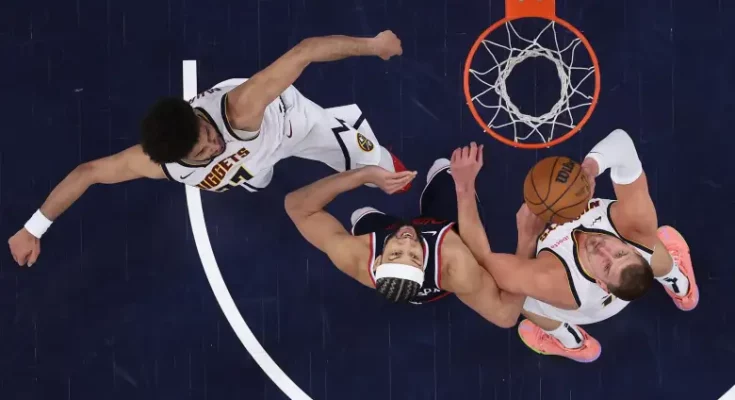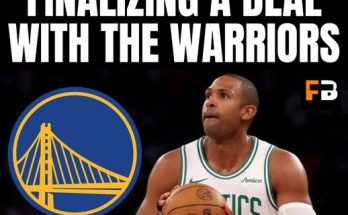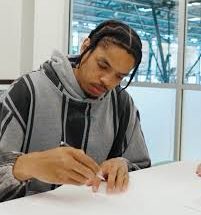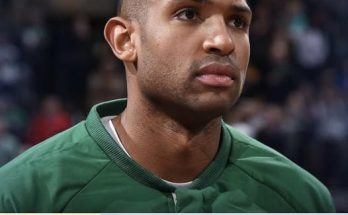The New York Knicks have always operated under a microscope. Whether it’s a coaching hire, a blockbuster trade rumor, or even a free agency flirtation, everything the franchise does is amplified tenfold due to the gravitational pull of Madison Square Garden and the hyper-competitive New York media landscape. Now, as the Knicks front office looks to make a serious leap into title contention, they face a new and intriguing twist in one of the most talked-about pursuits of the NBA offseason: the potential acquisition of a former No. 1 overall pick. That player—while not named here at the start—is known across the league not only for his talent but also for the rollercoaster nature of his career. And just as the Knicks looked like a serious suitor, a new threat has emerged, possibly upending months of internal discussions and strategic planning.
To truly understand what’s at stake here, we need to look at what the Knicks have been building. Over the last three seasons, the team has transitioned from being an afterthought in the Eastern Conference to a gritty, formidable squad that defends with intensity and shows flashes of elite offense. With Jalen Brunson blossoming into a legitimate All-Star caliber point guard, Julius Randle continuing to be a regular-season workhorse (despite his playoff inconsistencies), and a core of young, improving players like RJ Barrett (prior to his departure), Quentin Grimes, and Immanuel Quickley (also traded recently), the Knicks have created a foundation that fans can believe in again. However, it’s clear they’re still one or two pieces away from contending with the likes of Boston, Milwaukee, or even Philadelphia, depending on what version of the Sixers shows up post-Harden era.
Enter the intrigue surrounding the former top pick. Since being selected first overall in the NBA Draft, this player has gone through a whirlwind of expectations, injuries, positional experimentation, and off-court challenges. Yet through it all, his potential has never been fully erased. Teams across the league continue to eye him as a reclamation project with immense upside. For the Knicks, a team with a demanding fan base and a relentless media cycle, acquiring such a player could either be a home run swing or a cautionary tale of another failed experiment. Yet the front office—led by Leon Rose and bolstered by William “World Wide Wes” Wesley—seems increasingly confident in their ability to surround any star with the proper infrastructure.
But therein lies the problem: just as New York seemed to gain momentum in the race for this particular player, an unexpected contender has stepped into the ring. This new threat isn’t just another small-market team looking to take a chance; it’s a well-established franchise with a recent history of playoff success, a strong development culture, and assets that could rival or even surpass what the Knicks are willing to part with. That changes everything. The Knicks, who had previously been operating from a position of relative leverage, now must reassess their approach. Do they sweeten the pot with more draft picks? Are they willing to give up one of their promising young players—someone like Grimes or Mitchell Robinson—to seal the deal? Or do they stick to their guns, letting the chips fall where they may?
It’s important to note that the Knicks’ interest in this player didn’t come out of nowhere. Dating back to his college days, Knicks executives had scouted him extensively. There were internal debates about whether he was worth the No. 1 pick when he came out, and there’s been a consistent undercurrent of “what if” among scouts and executives since then. Now, with his current team open to listening to offers—thanks in large part to his inconsistent availability and questions about his long-term fit—it feels like the Knicks could be the team to finally unlock what so many believed he could be. The vision is tantalizing: pair him with Brunson, surround him with shooters, give him freedom in a Tom Thibodeau system that is increasingly adapting to modern offensive principles, and watch him thrive.
Yet nothing in the NBA comes without risk. The Knicks have worked hard to shed the label of dysfunction that clung to them for over a decade. Bringing in a player with a checkered injury history or one who has faced criticism for his work ethic or locker room presence could destabilize that hard-earned progress. That’s where due diligence becomes critical. League sources suggest that the Knicks have been digging deep into the player’s recent seasons, talking to former coaches, teammates, and even trainers to gauge where he is mentally and physically. Is he ready to be part of something bigger than himself? Can he handle the spotlight of New York, which is exponentially brighter than most other markets? And perhaps most importantly, does he want to be there?
That last question may be the most pivotal. While talent acquisition is often framed in terms of draft capital and trade packages, player preference plays a significant role in the modern NBA. Stars talk. Agents maneuver. Families and support systems factor in. The Knicks have tried to shift the perception of their franchise so that it’s no longer a place of last resort but a destination. That process takes time, and every move—big or small—can either help or hinder that progress. If this former top pick views the Knicks as a launching pad for a new chapter in his career, the front office may be willing to overlook some of the red flags. If, however, his heart lies elsewhere, it becomes a question of whether the juice is worth the squeeze.
Meanwhile, the new threat circling the waters isn’t sitting idly by. That team—well-coached, analytically sharp, and widely regarded for its player development—has the luxury of stability. They’re not desperate; they’re opportunistic. That can be even more dangerous in negotiations. With a roster full of versatile role players, draft assets, and a front office that has proven adept at winning trades, they could swoop in with a competitive package that appeals more to the player’s current team. They might also be in a smaller media market, one that allows the player to rehab both physically and reputationally without the pressure cooker that is New York City. In many ways, they represent the safer option for a player looking to restart his trajectory.
What the Knicks need to decide now is how aggressive they want to be. They’ve been patient—perhaps to a fault—over the last two seasons when it comes to star hunting. Despite having a war chest of draft picks and tradeable contracts, they passed on Donovan Mitchell, stayed on the periphery during the Damian Lillard sweepstakes, and opted for marginal upgrades rather than seismic shifts. That’s not necessarily a bad thing. They’ve avoided overpaying and maintained financial flexibility. But the window doesn’t stay open forever. Brunson is under contract on a very team-friendly deal, but eventually, he’ll need to be paid again. Randle’s future remains murky. And the Eastern Conference is only getting tougher, with younger teams like the Orlando Magic and Indiana Pacers on the rise, and contenders like the Celtics and Bucks not showing signs of slowing down.
The Knicks are approaching a fork in the road. They can either double down on the current build, hoping that internal development and smart role-player acquisitions will be enough to vault them into contention. Or, they can make a calculated gamble—using their assets to take a swing at a player who, if healthy and engaged, could be the piece that changes their ceiling. This isn’t a decision that can be made lightly. It’s not just about basketball; it’s about culture, sustainability, and identity. The Knicks have worked too hard to go back to being a punchline. But championship teams often take risks. The trick is knowing which ones are worth it.
The fan base is split, as usual. Some believe the Knicks should go all-in, arguing that opportunities to get a former No. 1 pick don’t come around often—especially one who still has prime years ahead of him. Others are more cautious, scarred by past failures like the Carmelo Anthony trade that gutted depth or the Andrea Bargnani experiment that backfired completely. This dichotomy reflects the tension within the organization itself. There’s pressure to win now, but also a desire to build something that lasts beyond a single playoff run. Balancing those priorities is the essence of modern team-building.
Adding another layer to the situation is the NBA’s new collective bargaining agreement and how it impacts team construction. The second tax apron, more punitive penalties for exceeding cap thresholds, and limitations on mid-level exceptions make it even more important to get value from every roster spot. Trading for a big-name player who doesn’t mesh could not only set the team back competitively but also handcuff their ability to make adjustments. That’s the kind of long-term ripple effect the Knicks must consider before making a move.
Ultimately, the story of this pursuit—of a former top pick with star potential—is about more than just one transaction. It’s a microcosm of the Knicks’ evolution as a franchise. The fact that they’re in the conversation at all is a sign of how far they’ve come. Not long ago, they were begging stars to consider them. Now, they’re considered a serious player, one whose infrastructure, front office, and roster are respected across the league. That matters. Even if they don’t land this particular target, the process reveals a team that is learning, growing, and positioning itself for sustainable success.
But make no mistake—the outcome of this pursuit will have real consequences. If the Knicks land the player and he thrives, it could vault them into the elite tier of the Eastern Conference. If they lose out to the new threat and watch that player blossom elsewhere, the optics will sting. And if they acquire him but he flames out, it could undo years of careful planning. That’s the razor’s edge they walk.
For now, all eyes remain on Leon Rose and his inner circle. Will they blink in the face of this new challenger, or will they press forward with confidence, trusting their evaluations and their vision? The answer may define not just the next season, but the next era of Knicks basketball. The stakes are high, the moment is ripe, and in true New York fashion, the pressure is as intense as ever.



